Abstract
Background: The epidemic of gender-based violence in the Democratic Republic of the Congo (DRC) has garnered popular media attention, but is incompletely described in the medical literature to date. In particular, the relative importance of militarized compared to civilian rape and the impact on vulnerable populations merits further study. We describe a retrospective case series of sexual abuse among children and youth in eastern DRC.
Methods: Medical records of patients treated for sexual assault at HEAL Africa Hospital, Goma, DRC between 2006 and 2008 were reviewed. Information extracted from the chart record was summarized using descriptive statistics, with comparative statistics to examine differences between pediatric (#18 yrs) and adult patients.
Findings: 440 pediatric and 54 adult sexual abuse cases were identified. Children and youth were more often assaulted by someone known to the family (74% vs 30%, OR 6.7 [95%CI 3.6–12], p,0.001), and less frequently by military personnel (13% vs 48%, OR 0.14 [95%CI 0.075–0.26], p,0.001).
Delayed presentation for medical care (.72 hours after the assault) was more common in pediatric patients (53% vs 33%, OR 2.2 [95%CI 1.2–4.0], p = 0.007). Physical signs of sexual abuse, including lesions of the posterior fourchette, hymeneal tears, and anal lesions, were more commonly observed in children and youth (84% vs 69%, OR 2.3 [95%CI 1.3–4.4], p = 0.006). Nine (2.9%) pediatrics patients were HIV-positive at presentation, compared to 5.3% of adults (p = 0.34).
Interpretation: World media attention has focused on violent rape as a weapon of war in the DRC. Our data highlight some neglected but important and distinct aspects of the ongoing epidemic of sexual violence: sexual abuse of children and youth.
Malemo Kalisya L, Lussy Justin P, Kimona C, Nyavandu K, Mukekulu Eugenie K, et al. (2011) Sexual Violence toward Children and Youth in War-Torn Eastern Democratic Republic of Congo. PLoS ONE 6(1): e15911. doi:10.1371/journal.pone.0015911
Editor: James G. Scott, The University of Queensland, Australia
Received August 5, 2010; Accepted December 4, 2010; Published January 18, 2011
Copyright: 2011 Malemo Kalisyal.
Funding: The funding sources (UNICEF, USAID, IRC, and KfW) finance the clinical management of sexual abuse victims at the authors’ institution. The funders had no role in study design, data collection and analysis, decision to publish, or preparation of the manuscript.
Competing Interests: Donor funding for gender-based violence programs at the authors’ institution is contingent upon regular reporting of statistics on sexual abuse patients they have managed.
* E-mail: exo40mluc@yahoo.fr
Introduction
Violent conflict in the Democratic Republic of the Congo (DRC) over the past decade has been associated with a large-scale epidemic of rape [1,2]. The alarming brutality and scale of sexual
violence in some areas of eastern DRC has resulted in thousands of cases of traumatic genital injury and gynecologic fistulae among adult female victims, together with devastating psychological andsocial consequences [1,2,3,4].
Much attention has focused on military personnel using sexual violence as a deliberate tactic to terrorize, displace, and demoralize local communities [1]. Some cases of rape reportedly
occur in full, deliberate and enforced view of husbands and family members [1]. Indeed, rape has been used throughout history as a weapon of war [5], most memorably in recent conflicts in Bosnia [6] and Rwanda [5]. Sexual violence committed during these conflicts has been recognized as systematic and politically motivated: sexual assault was declared a crime against humanity by International Tribunal for the Former Yugoslavia (1996), and an act of genocide by the International Tribunal for Rwanda (1998) [5].
On the other hand, with the breakdown of social structures during times of war, sexual exploitation of vulnerable groups may occur without political motivation. The situation may be exacerbated by weakened judicial and law enforcement systems leading to a climate of impunity, or possibly a ‘‘normalization’’ of rape among the general population in times of violent conflict [7].
Following a complex civil war and international conflagration that has claimed over 5 million lives [8,9], multiple armed militias remain in eastern DRC. They lack a central command structure, and are responsible for numerous atrocities, looting and destruction [2].
Sexual crimes by renegade soldiers in the area may not represent a concerted political effort as much as random acts of violence by assailants in positions of power over their victims.
Similarly, it has been suggested during the Rwandan conflict that for many perpetrators, rape was another form of delinquency, like theft or looting [5].
Furthermore, a significant proportion of sexual assaults in the DRC involve nonmilitary
perpetrators, such as the police and civilians [2].
*In eastern DRC, the presence of multiple armed groups without central leadership, deserters known as ‘‘inciviques [11],’’ widely available military uniforms in the postwar period, and the possibility that civilians may wear military uniforms leaves open the possibility that patients’ description of uniformed assailant may not always be military personnel.
doi:10.1371/journal.pone.0015911.t001
Abonneren op:
Reacties posten (Atom)
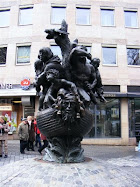

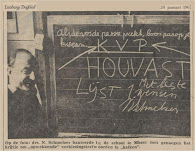


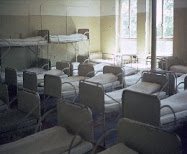






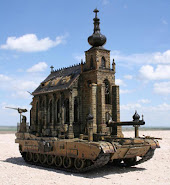
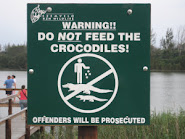


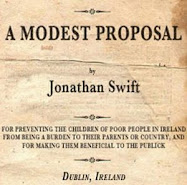


Geen opmerkingen:
Een reactie posten